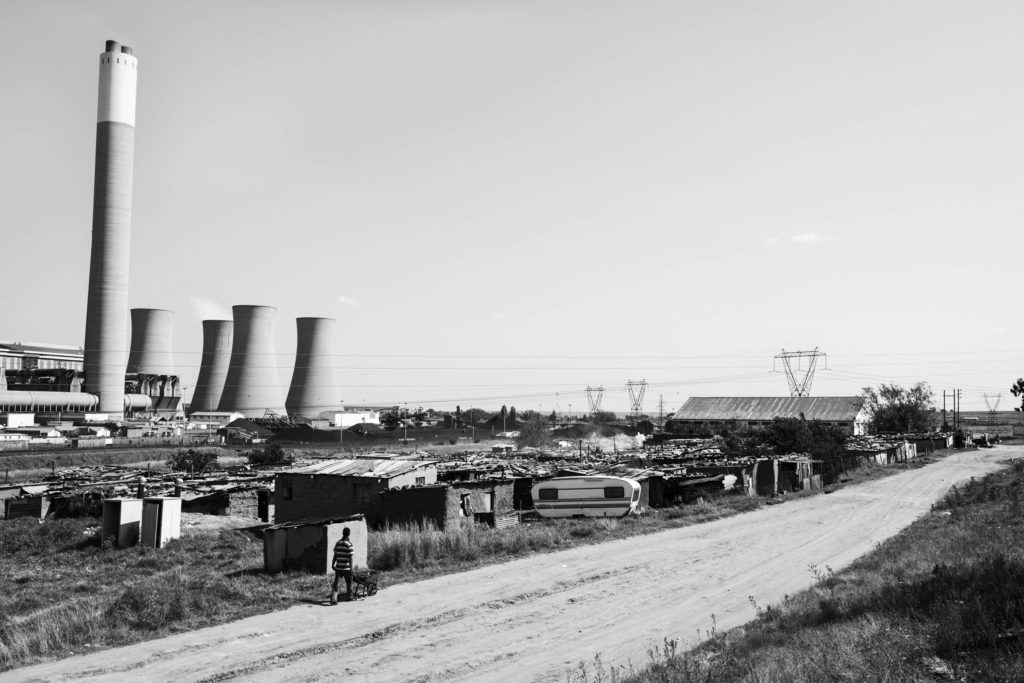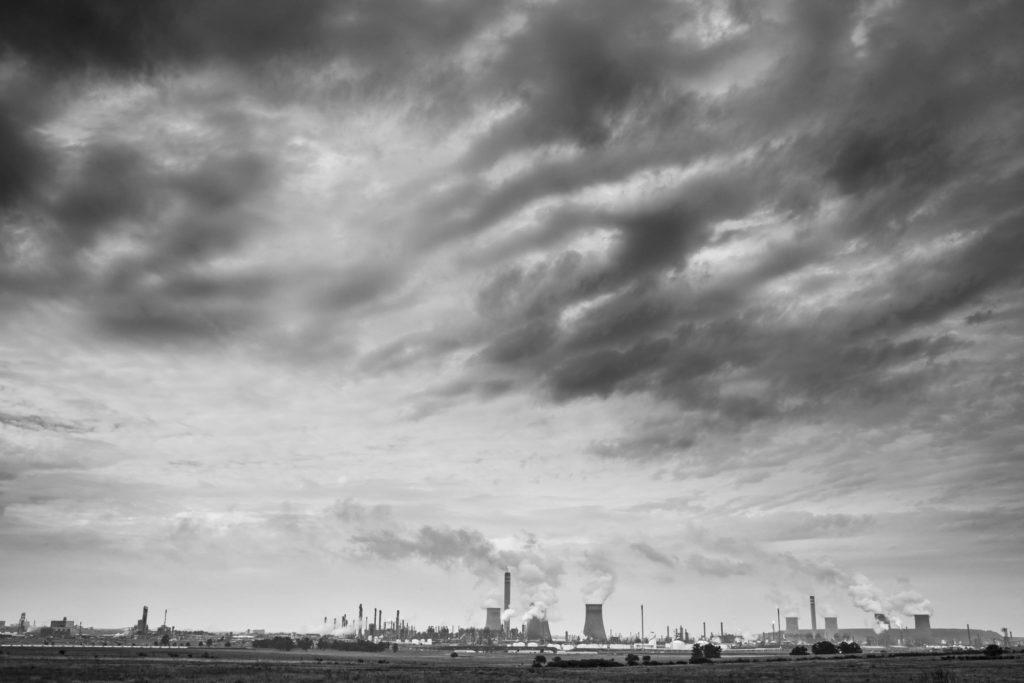Informal miner exiting the community made mine shaft. Ermelo, Mpumalanga (Daylin Paul)
If fine print isn’t your thing, you might miss photographer Daylin Paul’s acknowledgment of Lucky Biyase, the late business reporter he describes as “a humble, hardworking journalist who took me to Mpumalanga for the first time”.
Paul says Biyase “taught me how to cover mining”, making the final dedication in Broken Land (Jacana), Paul’s book-form photo essay on the effects of coal mining in Mpumalanga, heartfelt and noble.
It was while the two were exploring small-town Mpumalanga that Paul happened on several epiphanies that catalysed the project he eventually submitted for the 2017 Ernest Cole Photographic Award.
“It’s usually quite hard photographically to capture the socioeconomic stuff [especially] if you shoot for Business Times,” Paul says. “The two of us did pretty well on the first stories so then we kept on kind of going back and doing stuff around mining. But then it wasn’t only coal, it was also diamonds and gold and all different kinds of extractive stuff … he was from Newcastle, so he grew up around mines.”
 Big House, a settlement next to Komati Power Station. Komati, Mpumalanga. (Daylin Paul)
Big House, a settlement next to Komati Power Station. Komati, Mpumalanga. (Daylin Paul)
It follows then that Biyase’s congenial approach became, in a sense, Paul’s inheritance. “The way that Lucky worked, he was very good at personalising the stories,” Paul remembers. “We’d rock up into some small mining town on a Thursday night and meet up with miners and just talk. So you’d hear bits of this, this and that. You’d get the human aspect — how people were actually suffering — making sure that it wasn’t just like an environmental issue. Because it really is an environmental issue, but it’s a human rights issue as well. That was very important.”
Paul says he settled on the idea of focusing on coal after receiving confirmation of the award in the presence of his mentor, Peter Mackenzie, who enthused about coal’s material qualities and their suitability to black and white photography, Paul’s preferred style.
“In some of the pictures it really shows, like in the stuff on the ground, it shines,” says Paul.
So while you get no spectacular scenes of infernal sinkholes and the resultant volcano-like hills (sights that became common to Paul and Biyase as they initially worked their way around the province), you do acquire a panoramic appreciation of the devastation that comes with coal mining. Shooting from the air, the ground and beneath it, Paul avoids sensationalism, poverty porn and glib summations, producing instead a quiet, emotive set of images that are aesthetically beautiful yet evoke a sense of foreboding.
 Duvha Power Station. (Daylin Paul)
Duvha Power Station. (Daylin Paul)
Composition — primarily his use of depth, contrast and juxtapositions of scale — allows Paul to give us a tactile sense of what living surrounded by colossal, nitrogen dioxide-spilling phalluses belonging to Eskom and Sasol, feels like.
In conversation, Paul elaborates on how his approach was responsive to the conditions he met on the ground. “In Mpumalanga, it is not just the digging of coal for mining, it is also the burning of coal for electricity,” he says. “So there is kind of like a trifecta of pollution because you have mine dust, which is visible, you have water sources, which are polluted, you have open-cast mines that are abandoned once they have been used and those turn into sinkholes and some of them are acidic. Then you get the air which is heavily polluted by Eskom and Sasol Synfuel plant [in Secunda].”
 The Sasol Synfuels Plant. Secunda, Mpumalanga. (Daylin Paul)
The Sasol Synfuels Plant. Secunda, Mpumalanga. (Daylin Paul)
Dark clouds, smoke and dust storms appear frequently in Paul’s images, not as mere framing devices but as the physical and, sometimes, metaphysical sites of pollution both visible and invisible. His only aerial image of Kusile power station in Delmas, in which cloud cover and the plant’s own emissions meld as to become indistinguishable, is perhaps most allusive to this.
Paul’s comments about the difficulty of capturing socioeconomic aspects, then, is quite clearly a reference to finding the language to depict both the aftermath and the present effects of mining. One of the ways he achieves this is in the unhurried manner in which people are portrayed through his lens. Although Paul harbours no pretensions of having attained ideal levels of intimacy in this work, which was initially compiled in a stop-start manner in 2015 before the pace intensified, his basic respect for his subjects’ agency and privacy is instantly recognisable in the body language and in the overall tenor of the images.
 Tumisang Mafa keeps livestock on a patch of land between Secunda and eMbalanhle near the Sasol Synfuels plant. “I wake up from fever and coughing when I am sleeping.” eMbalenhle, Mpumalanga. (Daylin Paul)
Tumisang Mafa keeps livestock on a patch of land between Secunda and eMbalanhle near the Sasol Synfuels plant. “I wake up from fever and coughing when I am sleeping.” eMbalenhle, Mpumalanga. (Daylin Paul)
He has no use for extraneous intrusions, even as he depicts isolated bodyparts, child labour and the toll the labour exerts on women. This judiciousness creates a degree of distance, but it also communicates an implicit sense of trust from those being photographed, giving the images a less confrontational iteration of power.
By refusing to perversely focus on the grinding poverty of his subjects, Paul keeps us focused on the systematic oppression that ensnares them and how its rapacious pace may never be reversed.
Broken Land is broad — perhaps too broad, with threads popping up and begging to be explored further. But such is the totality of the destruction in Mpumalanga. And what one witnesses here is a photographer thoughtfully trying to bring it all into view.